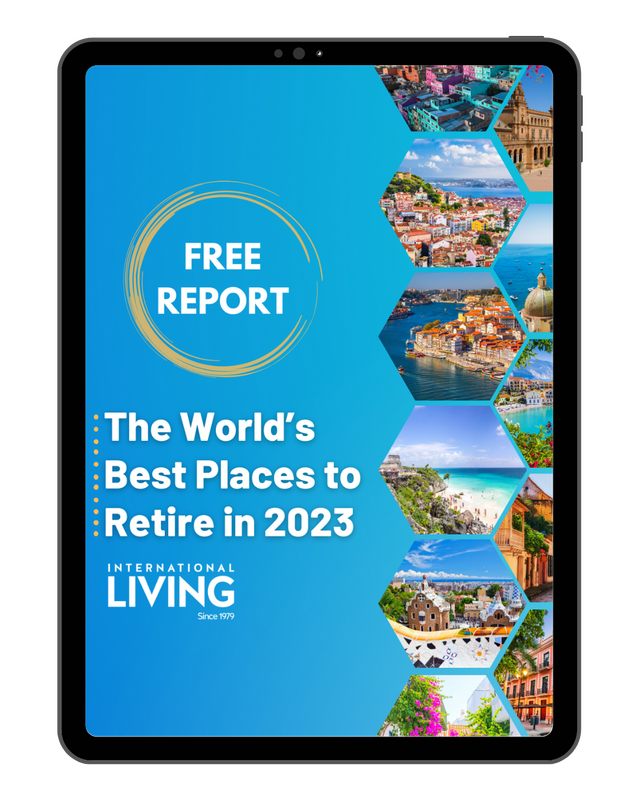In the post-pandemic world, when economies are struggling, countries are trying all sorts of gimmicks to bring new life to the local scene.
But whether you’re looking to live and earn legally in another country, or if you simply want to find a safer, happier place abroad where your nest egg will stretch further, there’s one question that might very well determine where you should focus your efforts:
How much money do I need to bring in every month?
Pretty much every visa application you’ll come across—retirement or work-related— will demand an answer to that question. Depending on the income you can legally prove, you might or might not be eligible to live in the country you wish. Take, for instance, the Cayman Islands. Its new remote worker visa demands proof of income of at least $100,000 per year. Some people can easily cover that. Others can’t. And if you’re in the “can’t” crowd, then clearly it makes no sense to even consider the Caymans as a potential destination.
All of which gets us to the bigger question: How much money must I earn to live in X? (Note: I’m using “earn” loosely. No one earns a Social Security or pension income; those are passive. “Earn” is simply shorthand for how much you need every month from employment or Social Security, pensions, rental income, etc. to qualify for a residence visa in a particular country.) That range of income necessary to live in a particular country is all over the map, as you might expect, given the wide range of costs from one country to the next. But cost of living often doesn’t equate with official income requirements. France is more expensive than Thailand, for instance, but the Southeast Asian nation requires you to prove nearly four times the income that France does.
Finally, double check these figures as you do your research; they change from time to time. Also, the dollar amounts I’ve listed will fluctuate because of currency gyrations.
Europe
Let’s start in Europe, since it tends to be the Holy Grail for so many people looking to live or retire abroad.
Portugal is emerging as a favored destination because of its moderate cost of living, fabulous food and wine, healthcare that’s among the best in the world, and a climate and geography reminiscent of Southern California.
If you seek a so-called D7 visa (it lets you live and work in Portugal), you’ll need to prove €7,200 per year in income, or the equivalent of roughly $740 a month. If it’s two of you seeking a visa together, then increase the amount by 50%.
To qualify in France, another popular destination (and one that’s actually quite affordable outside of Paris), you’ll need €564 per month (about $696) for yourself, or €840 ($1,036) as a couple, if you’re under 65. If you’re older than that, then you need about €870 ($1,073) as a single, or €1,350 ($1,666) as a couple.
From there, the figures escalate quickly. In Spain, a retiree residence visa requires €25,560 annually, plus €6,390 for each additional family member—basically, $2,628 or $3,285 a month, depending if you’re single or a couple. Greece requires €2,000 ($2,468) plus an additional 20% for a spouse, for a monthly requirement of $2,468/$2,961. Italy, meanwhile, is $3,185 as a single or $3,900 as a couple.
Latin America
In Latin America, you can typically expect much lower monthly income requirements.
Last fall, for instance, Ecuador dropped its minimum to just $400 a month, with no additional income requirements for a spouse. Argentina is at 30,000 pesos, which, because the Argentine peso is such a disastrous currency, is just $350 at the moment.
In Colombia, you’ll need 2.633 million pesos (about $765 per month), three times the national monthly minimum income.
In Peru, Costa Rica, and Panama, you’ll need $1,000 per month—though if you’re a couple, Panama increases that amount by $250, while Peru pushes it higher by $500.
Chile is generally satisfied with monthly income between $1,000 and $1,500. Uruguay is happy with about $1,500, though technically there’s no established minimum. Mexico is $1,620 per month, plus $540 for a spouse. Belize is at the top end—$2,000 per month.
Asia
Asia tends to be a more challenging continent for residence visas without big investments. But a few countries do offer special retirement visas that you can obtain through proven pension income.
In Thailand, generally you will need 65,000 baht ($2,175) per month, plus an 800,000 baht ($26,760) security deposit. Malaysia is slightly more at 10,000 Malaysian ringgits, or $2,500.
The Philippines is sharply lower at just $800 per month for a single, or $1,000 if you’re a couple. You’ll also need to make a $10,000 time-deposit in a Filipino bank.
Vietnam and Cambodia (both beautiful countries) don’t specifically offer long-term residence to foreigners, though many opt for a sort of unending temporary residence via visa extensions. Neither country sets a minimum monthly income.

Get Your Free Report on the World’s Best Places to Retire:
Learn more about the best places in the world to retire in our daily postcard e-letter.
Simply enter your email address below to sign up for our free daily postcards and we’ll also send you a FREE report on The World’s Top 10 Retirement Havens, plus access to over 10 more free reports. Our gift to you, on our favorite destinations.
Related Articles
The World’s Best Places to Retire in 2021
The Cheapest Places in the World to Live in 2021
5 Great Places to Retire Where it’s Easy to Fit In
Upcoming Conferences
The Only 2024 Fast Track Panama Conference
If your dream retirement involves stunning beaches… lush green mountains… a warm climate with no hurricanes… first-rate healthcare… incredible value for money (a couple can live well on $2,200 a month)… and the World’s #1 Retiree Discount Program…
Join our Panama experts and expats in February and discover why Panama could be your perfect paradise.
REGISTER NOW, SEATS LIMITED: EARLY BIRD DISCOUNT HERE
Popular Articles You May Also Like



.png)